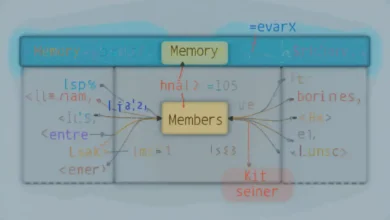Demystifying Sparse Matrix: its Significance and Applications

Introduction:
Sparse matrices are a fundamental concept in mathematics and computer science, playing a crucial role in optimizing storage and computation in various applications. In this guide, we’ll delve deep into what sparse matrices are, their significance, applications across different domains, and how they’re implemented. Let’s unravel the mysteries behind sparse matrices and explore their wide-ranging impact.
Sparse Matrices:
Sparse matrices are matrices in which the majority of elements are zero. Unlike dense matrices, which store all elements, sparse matrices only store non-zero elements and their positions. This property makes them particularly useful in scenarios where memory efficiency is crucial.
Significance of Sparse Matrices:
The significance of sparse matrices lies in their ability to optimize memory usage and computational efficiency. By storing only non-zero elements, sparse matrices dramatically reduce storage requirements and improve performance for operations such as matrix multiplication and inversion.
Applications in Data Science:
In data science, sparse matrices find extensive use in tasks involving large datasets with many zero values, such as natural language processing, recommendation systems, and machine learning. Sparse matrices enable efficient representation and manipulation of high-dimensional data, facilitating faster algorithms and model training.
Sparse Matrices in Computational Biology:
In computational biology, sparse matrices are employed in various applications, including sequence alignment, protein structure prediction, and phylogenetic analysis. Their ability to handle large, sparsely populated datasets makes them indispensable for analyzing biological sequences and structures.
Engineering Applications:
Engineers leverage sparse matrices in diverse fields like finite element analysis, structural mechanics, and electrical circuit simulation. Sparse matrix algorithms enable the efficient solution of large systems of linear equations arising in engineering problems, leading to faster simulations and optimizations.
Sparse Matrices in Image Processing:
In image processing, sparse matrices are utilized for tasks such as image compression, denoising, and feature extraction. Techniques like sparse representation and compressed sensing leverage the sparsity inherent in images to achieve efficient storage and processing.
Challenges and Solutions:
While sparse matrices offer significant advantages, they also pose challenges in terms of efficient storage formats, algorithm design, and handling operations on sparse data structures. However, various techniques such as compressed sparse row (CSR) and compressed sparse column (CSC) formats, as well as specialized algorithms, address these challenges effectively.
Implementing Sparse Matrices:
Implementing sparse matrices involves choosing appropriate data structures and algorithms based on the specific application requirements. Libraries like SciPy in Python and Eigen in C++ provide robust implementations of sparse matrix operations, making it easier for developers to work with sparse matrices in their projects.
Future Trends and Developments:
As data continues to grow in size and complexity, the importance of sparse matrices is likely to increase further. Advances in algorithms, hardware, and software tools will drive innovations in sparse matrix techniques, enabling even more efficient and scalable solutions across various domains.
Conclusion:
Sparse matrices play a crucial role in optimizing storage and computation in diverse fields ranging from data science to engineering and beyond. Their ability to efficiently handle large, sparsely populated datasets makes them indispensable in modern computational workflows. By understanding the significance and applications of sparse matrices, researchers and practitioners can harness their power to tackle complex problems more effectively.
FAQs:
Q1: How do sparse matrices differ from dense matrices?
A1: Sparse matrices store only non-zero elements and their positions, whereas dense matrices store all elements regardless of value.
Q2: What are some common storage formats for sparse matrices?
A2: Common storage formats include compressed sparse row (CSR), compressed sparse column (CSC), and coordinate list (COO).
Q3: Can sparse matrices be used in real-time applications?
A3: Yes, sparse matrices can be used in real-time applications, provided that efficient algorithms and data structures are employed to handle sparse data effectively.
Q4: Are there any limitations to using sparse matrices?
A4: While sparse matrices offer memory efficiency, they may introduce overhead in terms of algorithm complexity and implementation overhead.
Q5: How can I efficiently perform operations on sparse matrices?
A5: Libraries like SciPy and Eigen provide efficient implementations of sparse matrix operations, enabling developers to perform operations on sparse matrices with ease.




